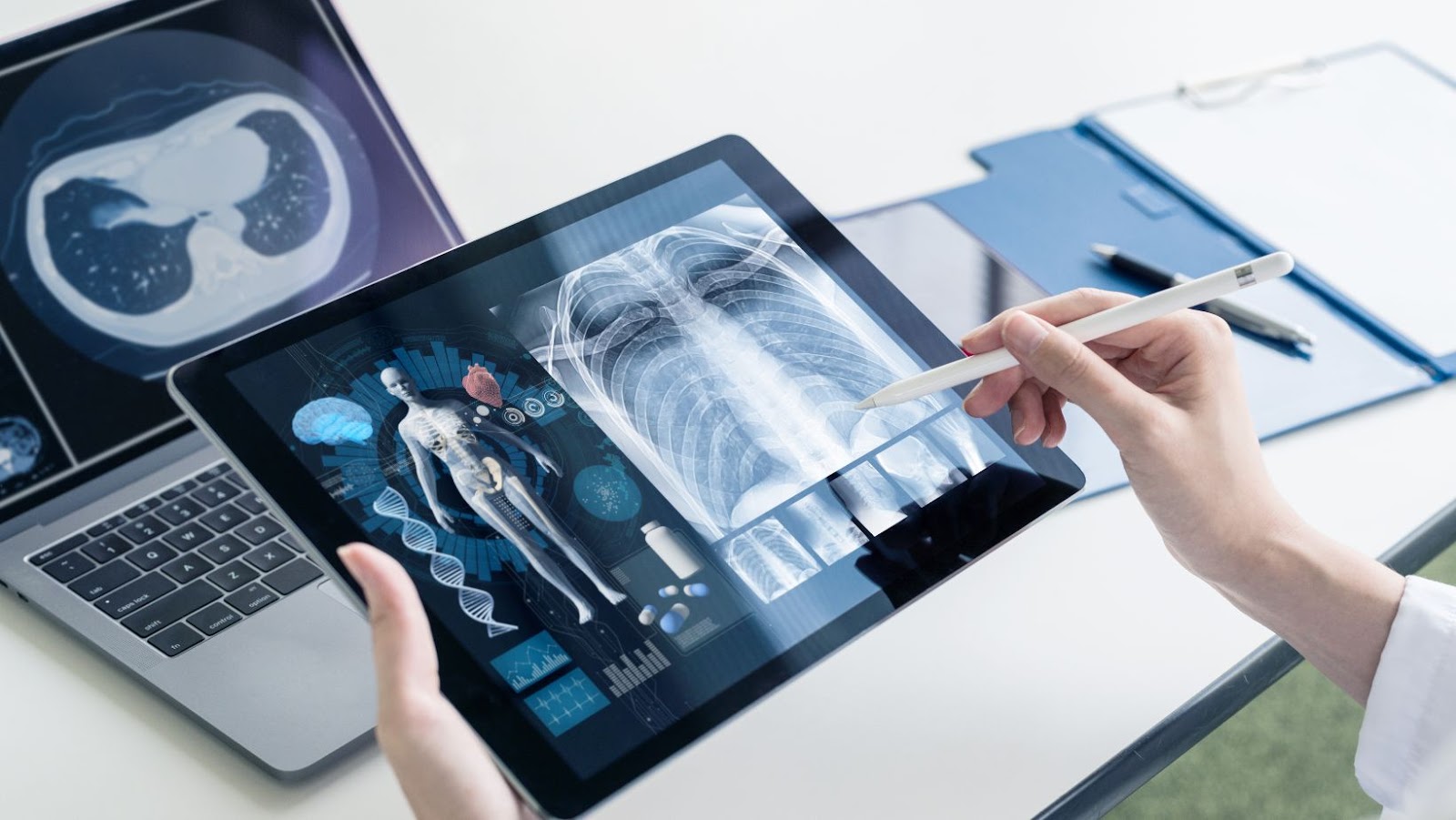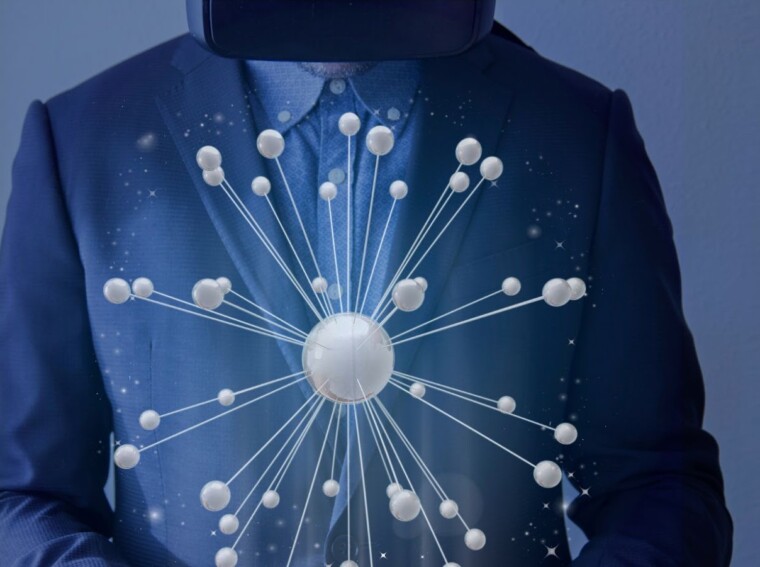Microsoft Mesh is a platform that enables shared experiences in mixed reality. It allows users to collaborate, communicate and share experiences in VR, AR and 3D environments. Microsoft Mesh leverages the power of distributed computing and mixed reality, and it can be used to create vivid and immersive mixed reality experiences.
In this article, we will explore some of the ways Microsoft Mesh can be used to enhance mixed reality:
Definition of Microsoft Mesh
Microsoft Mesh is a virtual collaboration platform developed by technology giant Microsoft. It provides users with an immersive, shared environment where they can join online meetings, collaborate on projects, and interact with 3D objects. In addition, Microsoft Mesh enables people to be physically present together in the same virtual space where they can interact with holographic objects and media and other users. With its breakthrough multi-user capabilities, it makes for a truly interactive experience that is unrivaled by current cloud solutions.

Microsoft Mesh supports Mixed Reality (MR) and Virtual Reality (VR) devices from multiple manufacturers such as HTC Vive, Oculus Rift, Microsoft HoloLens 2 and Windows Mixed Reality Headsets. It also supports development for Windows and Apple devices running the iOS operating system. With its powerful computing capabilities, people can now create richer experiences by combining the digital and physical worlds. Additionally, Mesh features a highly efficient compute fabric to ensure real-time processing of any immersive applications being used within the virtual space.
Microsoft Mesh enables developers to build mixed reality applications such as:
- Doing online meetings or presentations using holographic objects and media;
- Constructing 3D models collaboratively;
- Engaging in real-time conversations in different languages;
- Simulating physical activities like playing sports or taking part in a project;
- Generating rich 3D content right inside the shared environment;
- Manipulating rich media like videos in near-real time while interacting with others in the space.
These are just some of the use cases enabled by Mesh that make this an ideal platform for developing immersive applications for business enterprises or educational settings.
Microsoft Mesh powers shared experiences in mixed reality
Microsoft Mesh is a powerful platform that creates unique mixed reality experiences. It offers a variety of tools and services that help users easily create immersive, shared mixed reality experiences accessible across all major mixed reality devices.
This article will discuss the advantages of using Microsoft Mesh to create mixed reality experiences.
Collaboration in Mixed Reality
Collaboration in Mixed Reality is one of the major benefits of Microsoft Mesh. With this technology, users can be located anywhere worldwide and still feel as if they are all in the same space. Users must have their virtual avatar connected to a Windows Mixed Reality or an Oculus device to start.
Microsoft Mesh users can interact with 3D objects in a shared environment, making real-time changes that all participants can see. The technology allows users to place virtual objects within realistic environments, build rich scenes using game engines, and share content seamlessly between devices and platforms. Users can also create rich immersive experiences for VR headset and HoloLens and connect with remotely located specialists for training and support.
Microsoft Mesh’s collaborative environment allows remote teams to stay connected and interact more frequently than ever before, regardless of distance or time zones. As a result, it gives businesses an edge over their competitors through improved productivity and efficient collaboration between teams without having to gather their workplace under the same roof at all times. Overall, Mesh allows people to meet up with colleagues no matter where they are located making it easier than ever before for remote teams to collaborate efficiently even while working remotely!
Multi-user Experiences
Microsoft Mesh is a cross-platform spatial computing platform that provides a shared experience between multiple users in Mixed Reality (MR). With AI and sensors, Mesh enables users to share physical objects and spaces, and interact with each other’s virtual avatars. This allows for extremely diverse multi-user experiences across various industries.
In education, Mesh provides collaborative learning experiences. For example, students can work together to solve a complex problem in the same virtual environment. Instructors can also use Mesh to observe each student’s progress in real-time. In business settings, people can attach notes to physical objects such as 3D models of parts or structures and collaborate with colleagues on the same product design items. These interactions are stored on Microsoft’s cloud services, ensuring data security while providing access across devices both in and out of virtual reality.
The Mesh platform also offers numerous opportunities for developers and IT professionals creating mixed reality software applications that rely on processing power from Azure cloud services to run simulations or machine learning models that benefit from distributed computing capabilities. For example, this opens up new possibilities for quickly creating computer-generated images (CGI) within an immersive environment or allowing developers to test AR/VR applications with other users remotely on the same network.
As its functionality evolves, Microsoft Mesh has huge potential for application in diverse sectors such as healthcare, retail marketing & analytics or social gaming development, among others, making it an exciting innovation that could shape the future of XR technology globally!
Cross-platform Support
Microsoft Mesh allows users to access their collaborative experiences from any device from any location. The integrated software platform enables multi-user support for both augmented and virtual reality (AR/VR) experiences. Powered by the Microsoft cloud, Mesh supports cross-platform operations between different devices and operating systems, including Windows 10 PCs, Apple iPads/Macs, Android tablets and phones, and Oculus Quest 2 headsets.
This allows users to connect to a Mixed Reality world hosted in Azure with just one click to easily access a shared experience in real time.
The Windows MR platform also offers an effortless way of communication through the holistic Microsoft Mesh framework, allowing developers to quickly create great user experiences using just a few lines of code. In addition, with components such as APIs and SDKs that are open source, it becomes easier for developers to deploy their applications across any OS or device without rewriting applications multiple times.
Moreover, with Azure Spatial Anchors providing 3D anchors across multiple devices along with built-in collaboration capabilities such as Reality Capture available on iPad or HoloLens 2 enabled systems; developing a collaboration experience across different platforms has become much simpler now due to Microsoft Mesh’s ability to synchronise sessions per user making sure the other participant gets notified of every user action in real time. All these features make it easier for users to collaborate irrespective of the platform.
Applications of Microsoft Mesh
Microsoft Mesh is an innovative technology that allows mixed reality users to connect in shared virtual spaces and interact with each other in real time. It enables the creation of unique, interactive and immersive experiences across many different devices and platforms. Microsoft Mesh powers shared experiences in mixed reality, allowing developers to use various tools to create shared experiences in virtual and augmented reality, with applications ranging from streaming to collaboration.
Let’s dive into the different applications of Microsoft Mesh:
Virtual Meetings
With virtual meetings, Microsoft Mesh takes the traditional video call and gives it an interactive twist. People can join the call no matter where they are and immediately enter a shared environment in mixed reality. Users can talk to any number of participants, present 3D objects and models, and collaborate on projects using real-world tools like sticky notes, which stick to surfaces, whiteboards with 3D annotations and embedded web pages. Participants can even interact through avatars representing each person on the call, making it easy to track who is talking or doing what during any given moment of collaboration. This level of engagement eliminates geographical distance as a hindrance allowing people to interact as if they were in the same room.

Furthermore, files can be shared easily for quick troubleshooting or collaboration, including documents visible within the virtual instance or stored online via Microsoft applications such as OneDrive.
Remote Training
Microsoft Mesh can be used in remote training scenarios to provide employees a collaborative, interactive training experience. Mesh combines the real world with digital elements such as text, images, video, and audio. In addition, having virtual mentor sessions makes it easy for remote workers to learn and use new tools or technologies.
For example, if a training instructor demonstrates how to use a piece of equipment in real time, then that demonstration can be viewed by trainees remotely via Mesh.
Mesh is also useful in education as it offers an environment where learners can virtually interact with their instructors and peers. For example, during an online class session students can work on assignments collaboratively through Mesh’s shared space feature. Students can also engage with each other using real-time audio and video chat which allows them to ask questions and form study groups without leaving the virtual space. This can help foster deeper understanding of concepts being taught while enabling a collaborative learning environment irrespective of physical distance between students and instructors.
Virtual Shopping
Microsoft Mesh enables organisations and individuals to create a shared 3D space for idea generation and collaboration. This can be used to revolutionise virtual shopping experiences.
With Microsoft Mesh, customers can “virtually” move around the store, interact with products, receive assistance from staff members or other customers through avatars, and make purchases with pay-by-voice. In addition, they can receive notifications when their desired items become available or go on sale in real time through a seamless virtual shopping experience. Furthermore, as consumers’ biometric data is linked to their account they can easily track their orders or returns and access relevant digital contracts quickly and securely.
Microsoft Mesh has the potential to reconceive retail shopping via Mixed Reality (MR). By removing physical boundaries, companies can now provide an omnichannel shopping experience allowing them to meet customers where they are at every step of their journey; from discovery to purchase and beyond.
Challenges of Microsoft Mesh
Microsoft Mesh is a platform that has made it possible for developers to create shared experiences in mixed reality. Microsoft Mesh has opened up several opportunities for users to interact within a virtual space, however it is not without its challenges.
This article will take a closer look at some of the challenges associated with Microsoft Mesh and how they can be addressed:
Security Concerns
One of the main challenges Microsoft Mesh faces is security and privacy. While this technology can be incredibly beneficial in many ways, it also presents some potential risks. Microsoft Mesh requires physical and digital data to be stored on a centralised server and distributed across multiple locations. Without a proper security system, there is an increased risk of data theft or misuse by malicious attackers.
For instance, someone could gain access to confidential information or manipulate the data stored on the server.
Furthermore, although Microsoft Mesh provides a safe environment for users to collaborate and interact, it does not address all potential security concerns associated with mixed reality (MR) technologies. For example, it does not protect users from malicious malware or cyber attacks that could target their systems or have implications for their privacy if they use these technologies in their workplace or personal lives. Additionally, although Microsoft’s protocols are designed to protect users from malicious attacks, some inherent risks associated with cloud computing must be considered.

Overall, Microsoft Mesh is an innovative technology that offers many exciting opportunities for augmenting human communication and collaboration in mixed reality applications; however, it is important to remember that there are still a few security concerns that need to be addressed before this technology can be safely used by all parties involved. Ultimately, only when adequate safeguards have been put into place will we truly realise the full potential of this technology when applied across different sectors such as business and education.
Lack of User Adoption
Microsoft Mesh has been designed to provide Mixed Reality experiences with multiple users. However, despite the potential of this technology, one of the main challenges is user adoption. While Microsoft Mesh works seamlessly with other Microsoft products (i.e. HoloLens), the lack of customer awareness around this technology means that many people are unaware of its capabilities and are not likely to adopt it for their use cases.
To alleviate this issue, more information needs to be disseminated about what Microsoft Mesh is, how it works and how it can be used in different applications. Additionally, more research needs to be done into how various users respond to this immersive mixed reality experience and what features they might find most useful or engaging. Finally, better marketing efforts are needed to reach a wider audience and introduce them to the power of mixed reality using Microsoft Mesh technology.
Cost of Implementation
The cost of implementing a Microsoft Mesh environment varies depending on the size and complexity of the setup. Generally, a basic development setup designed to create and launch applications or experiences can range from $10,000 to $30,000. This may include hardware such as headsets, controllers or cameras and multi-user support for extended collaboration.
For larger enterprise solutions, the cost of implementation can reach up to six figures. It can include money for software licences, technical consultation about architecture and implementation options for project scales. Companies may also choose to outsource parts of the development process such as creating 3D assets or revamping existing sites in mixed reality which will require additional costs.
The challenge in implementing Mixed Reality technology is that there are still so many unknowns regarding its usage within businesses beyond UI/UX design considerations. Therefore, companies must think about their goals holistically when planning mixed reality projects, ensuring they understand what resources will be necessary upfront regarding budget and human capital before diving into implementation projects.
tags = countless proposals for virtual reality technologies, intensely visual and mesmerizing live performances, ar microsoft mesh snapdragon spacessteincnet, microsoft ar microsoft mesh snapdragon spacessteincnet, snapdragon 3ghz ai q3tibkencnet, qualcomm snapdragon 3ghz ai q3tibkencnet, qualcomm ar microsoft snapdragon spacessteincnet, qualcomm ar mesh snapdragon spacessteincnet, microsoft qualcomm ar mesh snapdragon spacessteincnet, microsoft qualcomm ar microsoft snapdragon spacessteincnet, qualcomm ar snapdragon spacessteincnet, microsoft ar microsoft snapdragon spacessteincnet, digital conference via holoportation, 3d capture technology

